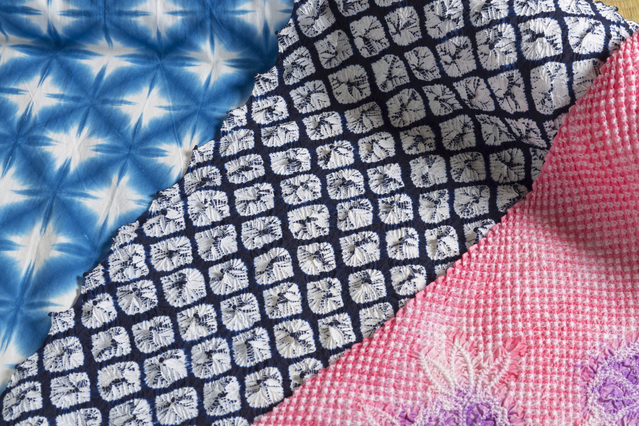有松・鳴海絞
Pronunciation: Arimatsu-Narumi Shibori
Production area: Arimatsu and Narumi districts, Nagoya City, Aichi Prefecture
Arimatsu-Narumi Shibori is the collective name for shibori dyeing (tie-dyeing) produced mainly in the Arimatsu and Narumi districts of Nagoya City. The technique is said to have been introduced between 1596 and 1615, when workers from Bungo (present-day Oita Prefecture) came to help build Nagoya Castle. Using this method, Shokuro Takeda created hand towels (mame-shibori) and sold them as “Kukuri Shibori,” marking the beginning of the tradition. The “kukuru” (binding) technique has nearly 100 variations, such as Kumo Shibori (spider shibori), Arashi Shibori (storm shibori), and Sekka Shibori (snowflake shibori), each producing a unique handmade effect. The production process involves carving a stencil, transferring the design onto fabric with a liquid extracted from the dayflower plant (aobana), binding the fabric with cotton thread, and dyeing it. Areas bound with thread resist the dye, and once the threads are removed, intricate patterns emerge. Finally, the fabric is steamed and stretched to complete the process. Specialized artisans handle each stage, requiring 50 to 60 days to complete. Today, Arimatsu-Narumi Shibori is used for a wide range of products, from silk garments such as Furisode and Houmongi Kimono, to cotton yukata, fashion fabrics, and even interior items. It was designated a Traditional Craft by the Ministry of Economy, Trade and Industry in 1975.




















